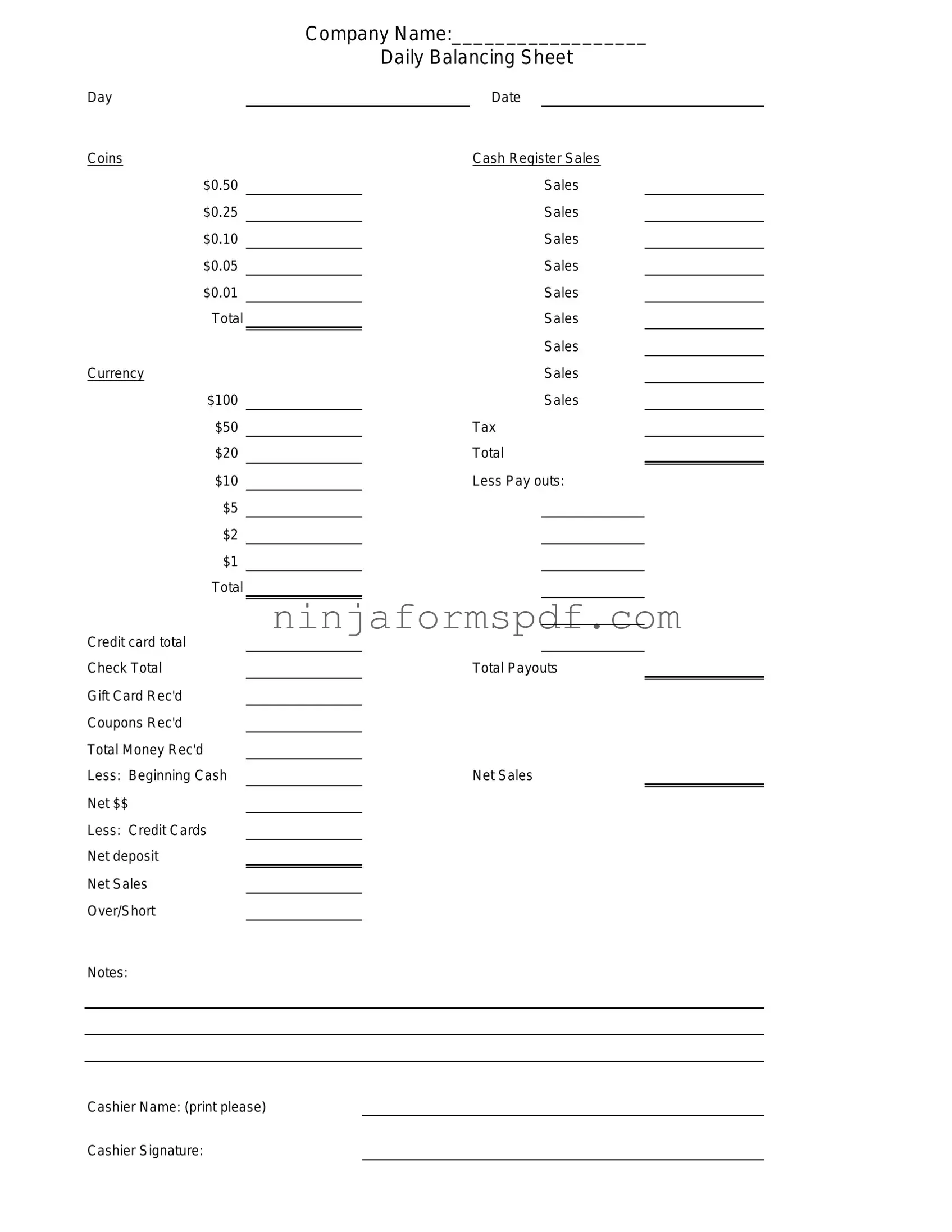The Cash Drawer Count Sheet form shares similarities with a Daily Sales Report. Both documents serve as critical tools for tracking financial transactions each business day. They meticulously record the day's earnings, ensuring accuracies in sales and cash flow. While the Cash Drawer Count Sheet zeros in on the cash aspect, the Daily Sales Report offers a broader view, encompassing all types of transactions, including credit and debit card sales, to provide a comprehensive financial overview.
Similarly, a Bank Deposit Slip echoes the Cash Drawer Count Sheet, particularly in the meticulous detailing of funds prepared for deposit. The focus for both is on accurately recording monetary amounts, though the Deposit Slip takes this a step further by facilitating the actual transfer of funds into a bank account. This ensures that the recorded cash totals are safely integrated into a business's bank records, streamlining financial management.
A Petty Cash Voucher is akin to the Cash Drawer Count Sheet, as it documents minor business expenditures. The emphasis for both is on precise record-keeping of cash movements. However, the Petty Cash Voucher specifically tracks cash disbursements for small, incidental expenses, providing a clear trail of minor cash flows within a business, contrasting with the broader cash balance tracking of a Cash Drawer Count Sheet.
The Inventory Control Sheet also bears resemblance to the Cash Drawer Count Sheet, but with a focus on merchandise rather than currency. Both forms are essential for accurate record keeping within a business, ensuring that either cash (for the Count Sheet) or products (for the Inventory Sheet) are meticulously tracked to prevent discrepancies and losses, highlighting the importance of accountability in different areas of business operations.
A Balance Sheet overview can be compared to the detailed focus of a Cash Drawer Count Sheet, with both providing crucial financial snapshots. The Balance Sheet presents a broader picture of a business's financial health, including assets, liabilities, and equity, while the Cash Drawer Count Sheet specifically tracks cash handling and balances. Despite these differences, they complement each other in offering comprehensive financial analysis and reporting.
The Point of Sale (POS) Transaction Report shares a functional resemblance with the Cash Drawer Count Sheet by capturing the specifics of sales transactions. Both documents detail the day's business activities, with the POS Report focusing on each transaction's specifics, including payment methods and sales items, whereas the Cash Drawer Count Sheet concentrates on the cash aspect of daily operations, ensuring that physical cash transactions are accurately accounted for.
Similar to a Cash Drawer Count Sheet, a Profit and Loss Statement (also known as an Income Statement) provides an overview of financial performance over a period. While the Cash Drawer Count Sheet is instrumental in tracking daily cash transactions, the Profit and Loss Statement expands the view to show revenues, costs, and expenses over time, helping stakeholders understand the business's financial health and operational efficiency on a broader scale.
Last but not least, the Employee Timesheet mirrors the Cash Drawer Count Sheet in its aim for precise record-keeping, albeit focused on employee hours rather than cash management. Both documents require meticulous detailing and accuracy to ensure fair compensation for work done (in the case of the Timesheet) and accurate cash balance reporting (for the Cash Drawer Count Sheet), reflecting the importance of accountability in different domains of business operations.

